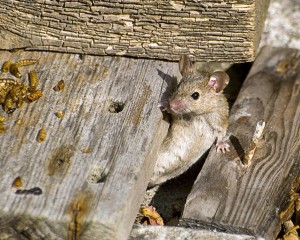The methods used for bat removal have nothing in common with the methods normally used for animals such as squirrels, groundhogs, and others. Instead of using traps, bat control is done by using a systematic exclusion program. It is illegal to use poisons, and it is illegal to kill some bats. Studies have shown bats have returned from distances of up to 150 miles, so trapping and “moving” bats only creates a false sense of security for homeowners who see the bats “caught and hauled away”.
The bat exclusion process requires several steps. The first step requires an observation of the structure shortly after sunset to locate the entrance/exit holes. This is done on a fairly clear night, as rainy and windy conditions are not favorable for bats to locate flying insects. The observation night can be at any time during the spring, summer, or fall.
The second step involves sealing all gaps, cracks, and holes, leaving the primary access hole(s) open. This prevents them from finding an alternate access point into the structure.
Step 3 is to install one-way exclusion devices that allow the bats to leave their roost site but not return into the structure.
Exclusions are usually performed in late summer and early fall. Excluding the mother bats during that period would create a problem even worse than having the bats in your attic, as the young bats would die without their mother to feed and care for them. The summer observations allow experts to be prepared for exclusions when the proper time comes. On many structures they will perform much of the sealing and repairs before the exclusion season begins.
Exclusions can range from a few hundred to several thousand dollars depending on the size of the structure, equipment required, materials for repairs, labor time for repairs and sealing. The cost for bat-proofing varies greatly depending on the combination of the previous factors. Some structures may require high-lifts or other equipment to perform a bat exclusion and bat-proofing. In some instances the primary entrance/exit holes are the only access point’s available, and basic repairs and exclusion may be sufficient.
Bat Inspection- This is to determine the species of colonizing bats and if young are present, active entry points and potential re-entry points, post-exclusion. This step will allow a bat control professional to give the customer an accurate quote to “bat-proof” the entire structure.
Bat Removal- Colony removal is achieved with mechanical devices called “check valve” or “bat valve”. This is a one-way door that will allow bats the ability to exit the structure but, not re-enter the structure.
Bat Exclusion- Bat exclusion is extremely tedious work. Technicians must work within very small tolerances. They must be very detail-oriented and very thorough. Failure to properly seal one ¼ inch gap can result in a failed exclusion.
Performing an inspection can be time consuming, as we closely inspect the entire outer structure. Performing an inspection requires every inch of the structure to be checked thoroughly, top to bottom. We inspect the rooftop and check the lower roof lines, along with all dormers, window frames, and other potential bat entry points.
Some insurance companies may cover bat exclusions, since they are not rodents. Most homeowners policies will not cover any rodent damage or removal, but since bats are not rodents contacting your agent prior to exclusion is suggested. Oddly enough, there are many insurance companies will not cover the exclusion cost, but will cover the guano removal and clean-up program.
Daniel is a professional NWCO. Service area northern Michigan. Graduate from the National Wildlife Damage Management Academy, he is a Certified Bat Exclusion Professional, Certified with the Michigan Animal Damage Control Association. http://www.vamoosevarmint.com/bat_control_pest_removal.htm
Related Bats In Summer Articles


